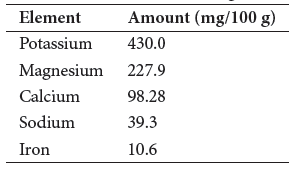


Journal of Pharmaceutical Research
Year: 2021, Volume: 20, Issue: 4, Pages: 71-79
Original Article
Zeliha Ustun-Argon ✉ 1, Zeliha Sari 3, Ali Gokyer 3, Sidika Buyukhelvacigil-Ozturk 3
The use of plant materials as the source of oil and functional foods is becoming more important with the new trends and scientific research. In this study, fig (Ficus carica) seed, which is a rarely found, seed and its oil, have been studied to determine the phytochemical properties for possible applications. Fig seeds were obtained from Aydın, Turkey. The oil was extracted by the cold press method. The seeds were analyzed for oil yield, protein, ash, ash insoluble in hydrochloric acid and trace elements. The oil was evaluated for fatty acid, sterol compositions by GC and the volatiles were analyzed with GCMS, tocopherols analyzed by HPLC, total phenolic content and antioxidant activity were determined spectrophotometrically. The oil was also evaluated for free fatty acid (FFA), refractive index (RI), peroxide (PV) and p-anisidine value. The results showed that F. carica has 22.7% oil yield and was characterized by linolenic (41.27%), linoleic (30.06%), and oleic acids (18.10%). Total phenolics were 79.5 mg GAE/100 g, and nine different sterol components were analyzed and β-sitosterol was at the highest rate. Theα-β-γ-δ tocopherol content was 6.088, 0.18, 634, 18 mgkg-1, respectively. Antioxidant capacity was 52.54%. Fenchone, cymene, styrene d-limonene, linalool, camphor were found as important volatiles. Quality parameters were FFA (% oleic acid) 0.90, RI (40 oC) 1.4721, PV (meq O2/kg oil) 2.2, p-anisidine 2.22. As a result, F. carica oil can be an alternative oil source and a good option for functional foods with their rich contentof phytochemicals. For the future, more studies need to be done for both the seeds and the oil for further applications.
Keywords
Ficus carica seed, cold-pressed oil, fig seed, phytochemical properties
© 2021 Published by Krupanidhi Educational Trust. This is an open-access article under the CC BY license (https://creativecommons.org/licenses/by/4.0/)
Subscribe now for latest articles and news.